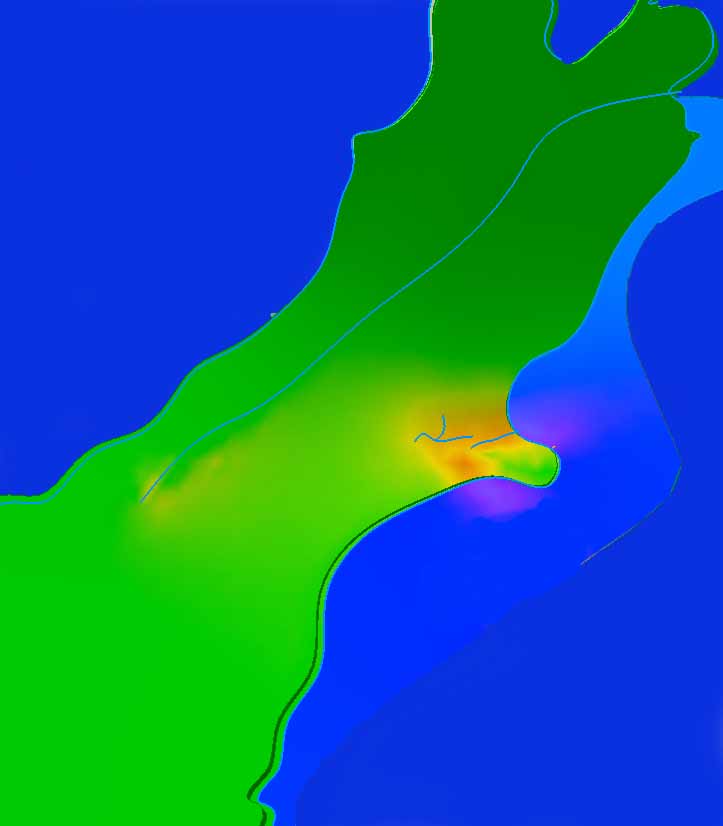After trying to create some computer simulations of the Christchurch fault lines, only one way was found that could be made to simulate the two fault lines, (all of which were shown to be the same basic fault, being caused by the same stress mechanics). I was unable to produce a basic slip/strike fault to produce the pattern of faults that we see this far south and the resulting stress lines that did show up had a more north-south direction and in the wrong location, not the east-west direction of the fault lines.
This then is the 3D computer model of a possible cause and explication of the Canterbury, Christchurch earthquakes. This theory was developed with the use of one of the best recognized engineering 3D cad and stress analysis software packages. The stress pattern is the result from this computer CFD analysis of the model.
The theory is modeled with the middle part of Alpine fault line being locked (as in fact it is), the Port hills / Banks Peninsula extinct volcano, and that ground layers move at different rates. For the purpose of this model the depth between the layers was set at about 20Km.
Banks Peninsula is being moved
along with the pacific plate in a southward direction, the lower layer though will
be travelling slightly faster that top layer. Banks Peninsula is an extinct
volcano so is a solid rock that runs through these layers, so if these layers are
travel at different speeds then it will get caught in the middle as a tug of
war. The result is that Banks Peninsula is effectively being bragged thought
the top layer. This will also cause it to tip/rolling over a bit. The model
shows this action as having the effect of lifting Banks Peninsula, and the
ground immediately to the north sinking.
This is shown in computer simulation below.
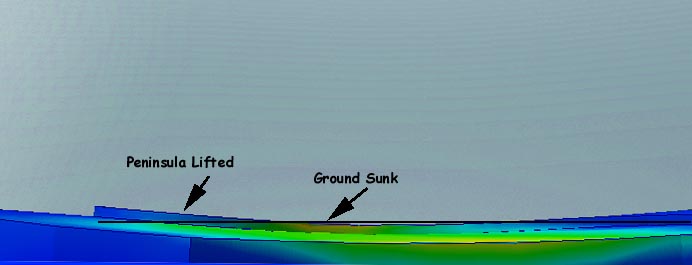
With the locked middle part of the Alpine fault, the ground to the north is being stretched and the ground south of Canterbury being compressed, this has the effect of adding extra stress and shear forces to the west of the port hills. This results in the pattern of quakes that we see. If the Alpine fault was not locked then the resultant fault lines that have broken would be more symmetrical about the port hills.(it may explain why the old fault lines that have been found out to sea have not released.)
Below shows a section view of the displacement effect of this locked Alpine fault. The front surface is modelled so as to be about 100Km from the fault line.
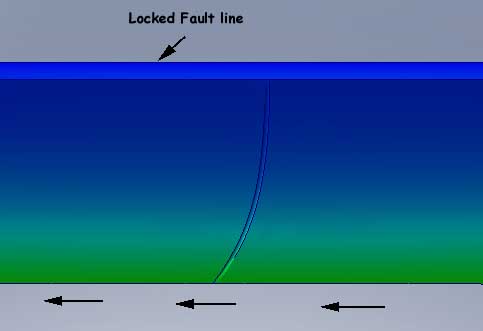
With an unlocked Alpine fault, the displacement in the layers would likely not be as great or take longer to achieve, but there may still have been an earthquake at some other time though, sole because Banks Peninsula would still be caught in the tug of war between the different layers as described above.
The close up view of the
Canterbury area of this computer simulated model is shown below. The lines of maximum stress have been shown by
black dotted line. This is remarkably close to the real fault lines and quake pattern that is happening in
reality.
This model also shows multiple nodes, one node is north of the main fault,
which is very much like what has happened.
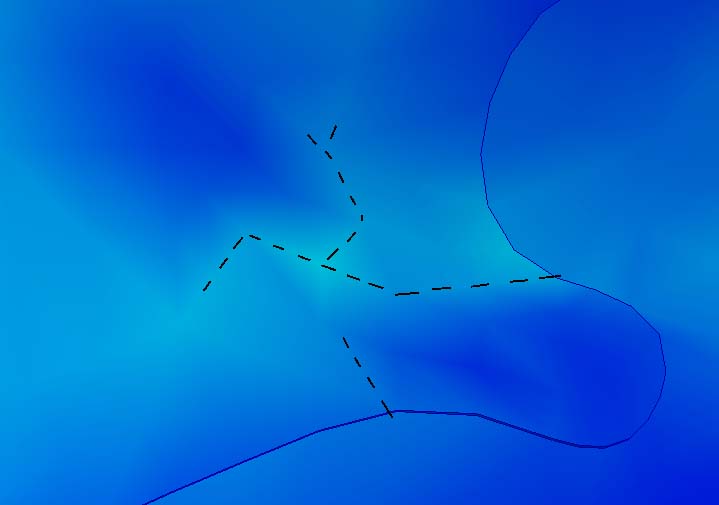
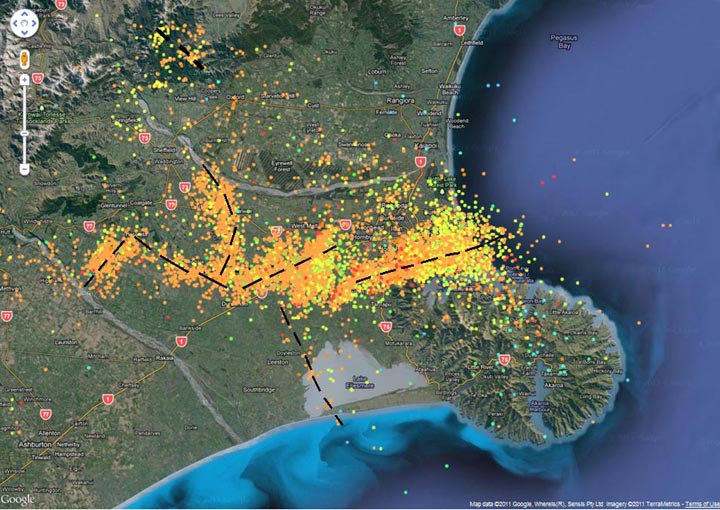
Also what seems to have shown up in this simulation is that there is more stress to the east of Christchurch and near the cost, this may help to explain why there was a lot of damage in that area.
On the map over lays below, the
marked area on the maps below are the 3D computer stress simulations of the
fault line and ground. Some of the simulations also shows that the stress does not
go far beyond the boundary of Banks Peninsula. This
would explain why there has not been any quakes beyond
this boundary.
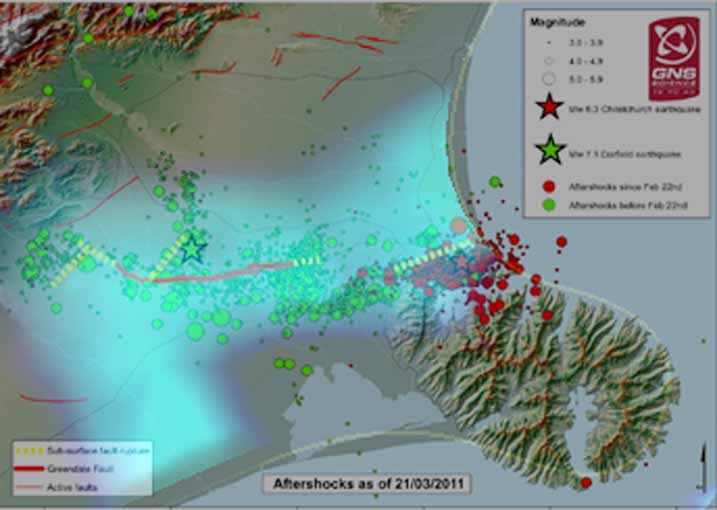
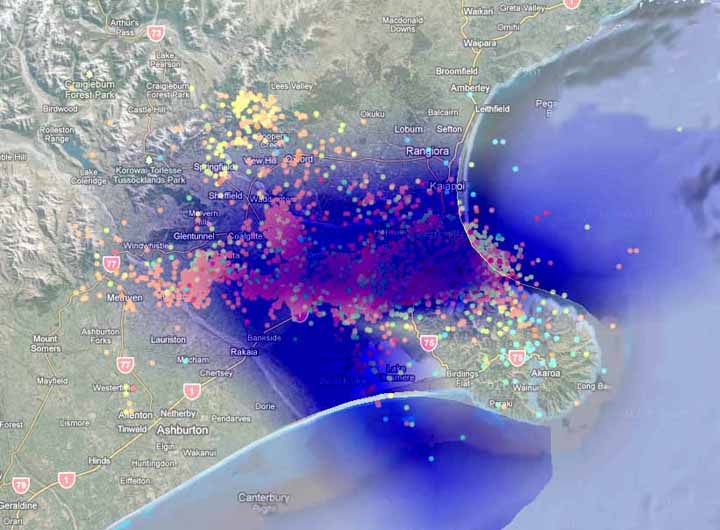
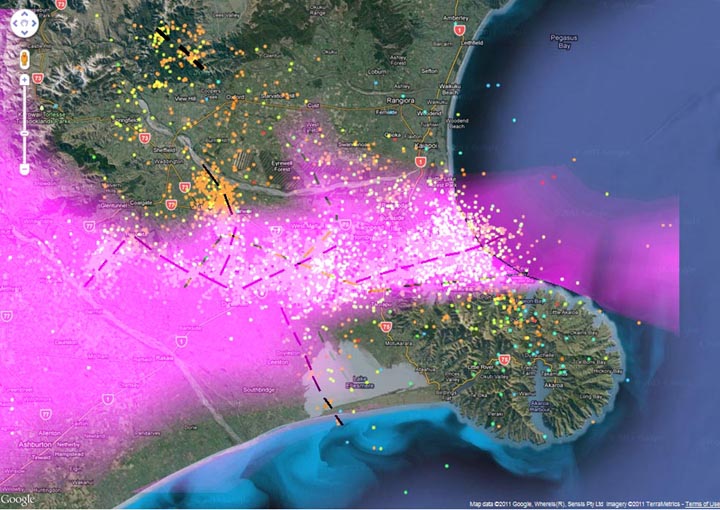
Below is a wider view of the computer model
